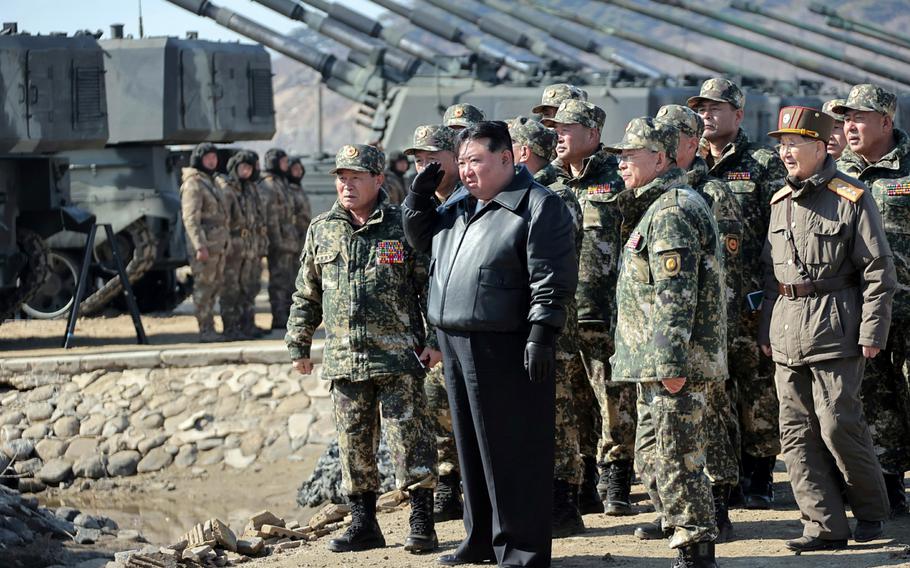
North Korean leader Kim Jong Un observes marksmanship training, March 6, 2024, in this image from the state-run Korean Central News Agency. (KCNA)
CAMP HUMPHREYS, South Korea — North Korea fired several suspected short-range ballistic missiles off its eastern coast Tuesday morning in its second day of testing so far this year, according to the South’s Joint Chiefs of Staff.
The missiles were launched around 9:30 a.m. from Chagang province, roughly 140 miles north of Pyongyang, and flew approximately 155 miles before splashing into the Sea of Japan, or East Sea, the Joint Chiefs said in a text message to news agencies.
South Korea and the United States had been monitoring the North’s preparations for Tuesday’s launch and “immediately” began tracking the missiles, according to the Joint Chiefs.
South Korea’s military is maintaining “a full readiness posture” and sharing information related to the missiles with the U.S. and Japan, the Joint Chiefs added. The three countries in 2023 created a real-time data-sharing system designed specifically for North Korea’s missile launches.
South Korean acting President Choi Sang-mok, who replaced impeached Prime Minister Han Duck-soo and President Yoon Suk Yeol, said the country will “sternly respond” to the North’s provocations, according to a Ministry of Economy and Finance news release.
North Korea last fired an intermediate-range ballistic missile that flew more than 680 miles from the Pyongyang area before splashing down in the Sea of Japan on Jan. 6.
That test of a hypersonic missile was overseen by North Korean leader Kim Jong Un. The weapon was designed to fly more than 12 times the speed of sound before striking Pacific targets, the country’s state-run Korean Central News Agency reported the next day.
North Korea’s description of its hypersonic missile launch is “highly likely” to be exaggerated, South Korean army Col. Lee Sung-jun, a spokesman for the Joint Chiefs, said during a Jan. 7 news conference.
The communist regime fired more than 50 ballistic missiles in 12 separate days of testing last year.
The latest missile launches come six days before President-elect Donald Trump’s inauguration.
Trump and Kim held summits in Singapore in 2018 and Vietnam the following year; the two leaders also met in 2019 at the heavily fortified Demilitarized Zone that divides the peninsula.
In a Nov. 22 speech at a defense exhibition in Pyongyang, Kim said Washington evidently would continue its “unchanging … hostile policy” against North Korea after his country had “already gone to every length in negotiations with the U.S,” according to a KCNA report the next day.
During an annual ruling Workers’ Party meeting last month, Kim said North Korea would adopt its “toughest” strategy against the U.S., according to a KCNA report Dec. 29.
“This reality clearly shows to which direction we should advance and what we should do and how,” Kim said in the report.